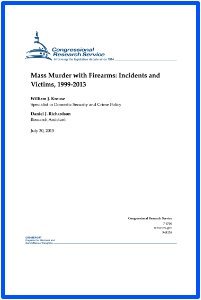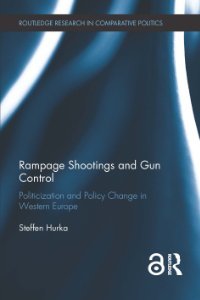By Sarah Watson
Mass shootings are one example of a focusing event that has particular significance for firearms legislation. Mass shootings shock, disturb and provoke enormous and controversial debate, often causing significant public and media resonance, becoming the subject of intense discussion politically. At times providing an impetus for legislative amendments, often in distinct ways that routine gun violence does not. If certain events highlight the need for reform, policy change becomes more likely. Cases with the lowest number of victims are likely to generate the least amount of attention and are most likely to be missed in data collection, rendering them the least noteworthy, least important in terms of lethality and social and political consequence. Various problems come to the attention of people in and around government, necessitating an understanding of why such problems occupy officials’ attention and appear to be more ‘deserving’ of attention.
Criminology & Criminal JusticeOnlineFirst, July 19, 2022












